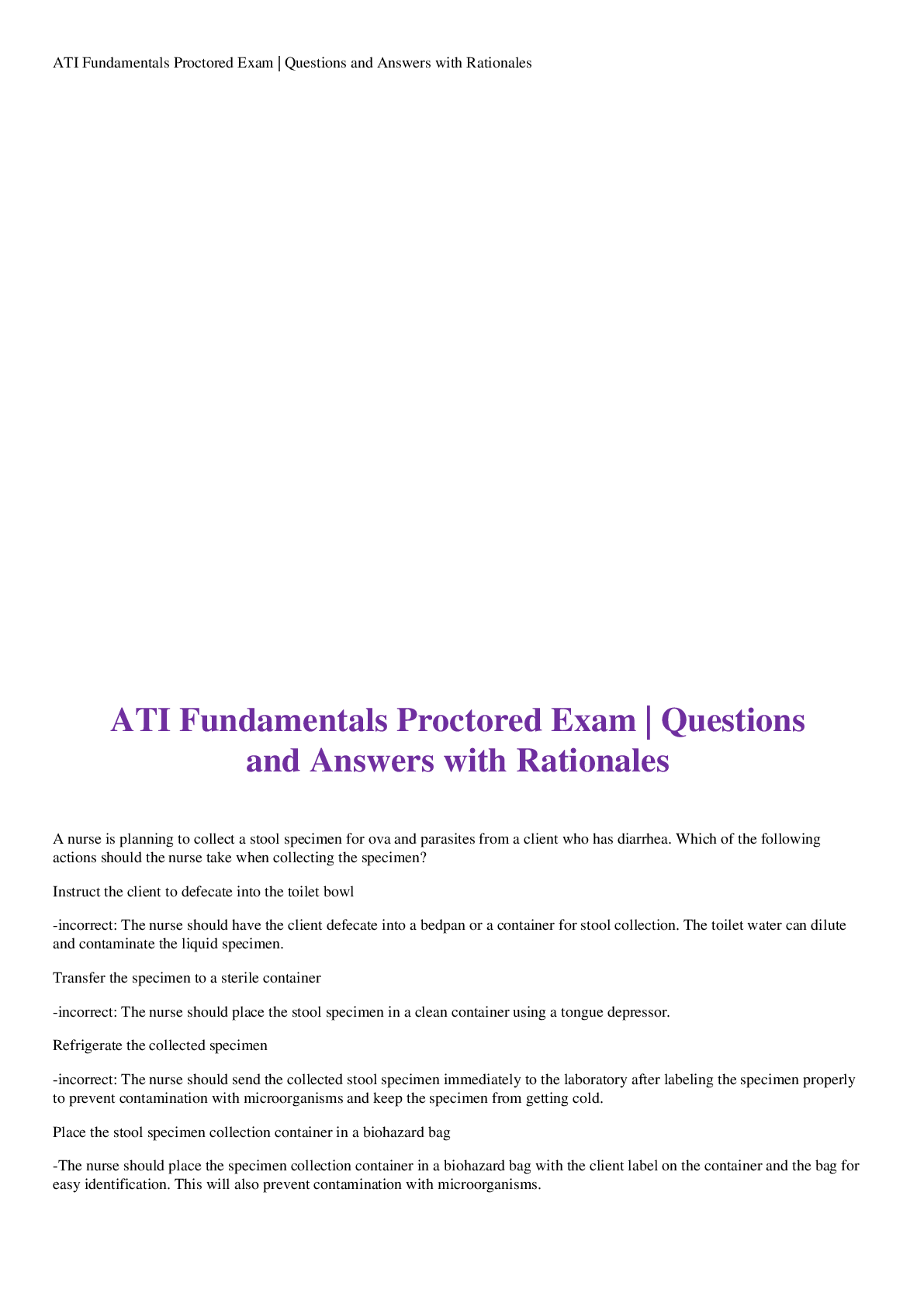ATI RN maternal newborn nursing > EXAM > ATI NEWBORN NURSING CARE AND ASSESSMENT PRACTICE EXAM 1 LATEST 2024/2025 COMPLETE STUDY Q&A’S WITH (All)
ATI NEWBORN NURSING CARE AND ASSESSMENT PRACTICE EXAM 1 LATEST 2024/2025 COMPLETE STUDY Q&A’S WITH RATIONALES | RATED A+
Document Content and Description Below
ATI NEWBORN NURSING CARE AND ASSESSMENT PRACTICE EXAM 1 LATEST 2024/2025 COMPLETE STUDY Q&A’S WITH RATIONALES | RATED A+ 1. A nurse in a delivery room is assisting with the delivery of a newborn ... infant. After the delivery, the nurse prepares to prevent heat loss in the newborn resulting from evaporation by: o A. Warming the crib pad o B. Turning on the overhead radiant warmer o C. Closing the doors to the room o D. Drying the infant in a warm blanket Correct Answer: D. Drying the infant in a warm blanket. Newborn temperature at birth is around 37.2ºC (99ºF) because they have been confined in their mother’s warm uterine environment. The newborn’s temperature will immediately drop upon delivery due to various factors like the newborn’s immature temperature-regulating mechanism, inability to properly conserve heat, temperature of the birthing environment, and if the newborn is not protected from heat loss following delivery. Option D: Evaporation is the loss of heat through the conversion of liquid to vapor. Newborns are wet from the amniotic fluid when they are born, as the fluid evaporates from their skin, they can lose heat. Drying the infant using a warm blanket is an excellent measure to help conserve heat or prevent heat loss. Additionally, drying the face and hair, covering the hair with a cap, and laying the newborn on the mother’s abdomen, effectively reduces heat loss through evaporation. Keeping the newborn dry by drying the wet newborn infant will prevent hypothermia via evaporation. Option A: Warming the crib pad prevents heat loss through conduction, which is the transfer of body heat to a cooler solid object in contact with the newborn. Option B: Using the overhead radiant warmer is heat loss through radiation, which is the transfer of body heat to a cooler solid object not in contact with the baby Option C: Closing the doors to the room eliminates drafts is heat loss through convection (flow of heat from the newborn’s body to cooler surrounding air). 2. A nurse is assessing a newborn infant following circumcision and notes that the circumcised area is red with a small amount of bloody drainage. Which of the following nursing actions would be most appropriate? A. Document the findings B. Contact the physician C. Circle the amount of bloody drainage on the dressing and reassess in 30 minutes D. Reinforce the dressing Correct Answer: A. Document the findings. The penis is normally red during the healing process. Option A: Close observation of the circumcision site during the first few hours is necessary to determine if there is a complication. A yellow exudate may be noted after 24 hours, and this is a part of normal healing. This should not be washed away because it serves a protective function. The nurse would expect that the area would be red with a small amount of bloody drainage. Because the findings identified in the question are normal, the nurse would document the assessment. Additionally, document if the infant is voiding after the procedure to ascertain that the urethra is not occluded. Instruct the parents to keep the site free from feces and covered in petrolatum until healing is complete. If the infant cries constantly and if there is redness or tenderness due to pain, it should be reported to the physician. Option B: Hemorrhage, infection, and urethral fistula formation are rare complications that can occur from circumcision. If bleeding is not controlled, then the blood vessel may need to be ligated, and the nurse would contact the physician. Option C: A circumcision site that appears red is normal as long as it does not have a strong odor or strong discharge. Option D: If the bleeding is excessive, the nurse would apply gentle pressure with sterile gauze. 3. A nurse in the newborn nursery is monitoring a preterm newborn infant for respiratory distress syndrome. Which assessment signs if noted in the newborn infant would alert the nurse to the possibility of this syndrome? [Show More]
Last updated: 10 months ago
Preview 4 out of 15 pages

Loading document previews ...
Buy this document to get the full access instantly
Instant Download Access after purchase
Buy NowInstant download
We Accept:

Reviews( 0 )
$16.00
Can't find what you want? Try our AI powered Search
Document information
Connected school, study & course
About the document
Uploaded On
Oct 12, 2024
Number of pages
15
Written in
Additional information
This document has been written for:
Uploaded
Oct 12, 2024
Downloads
0
Views
33
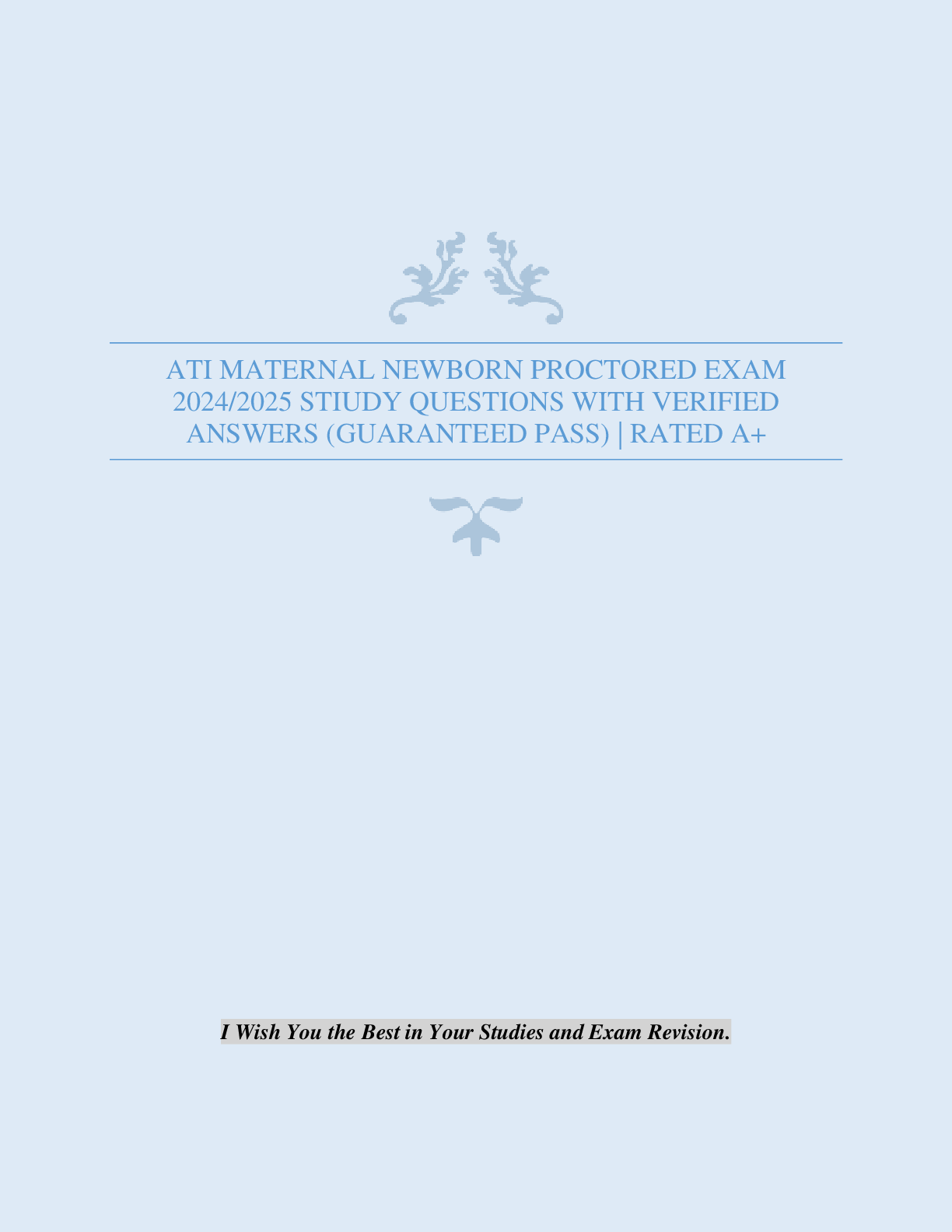


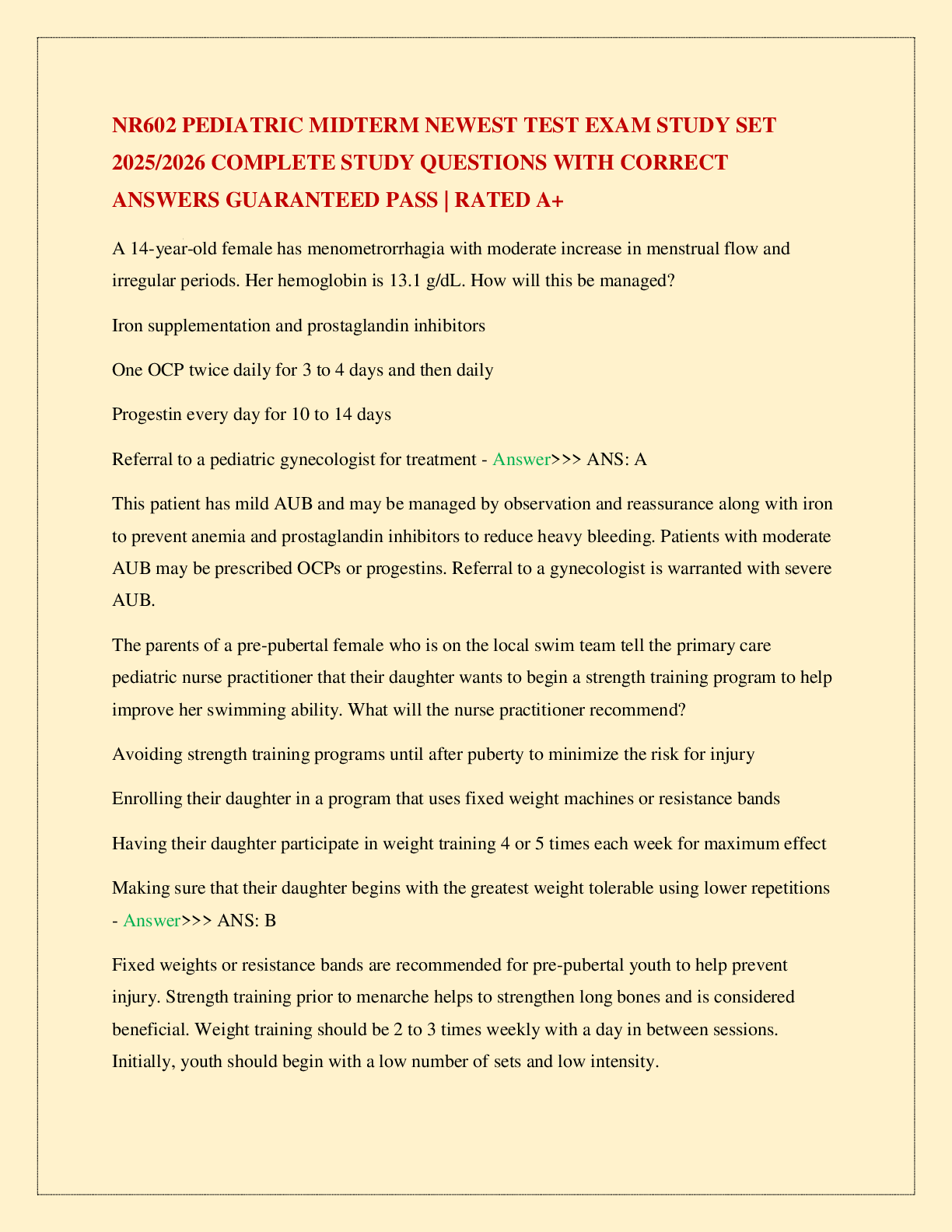
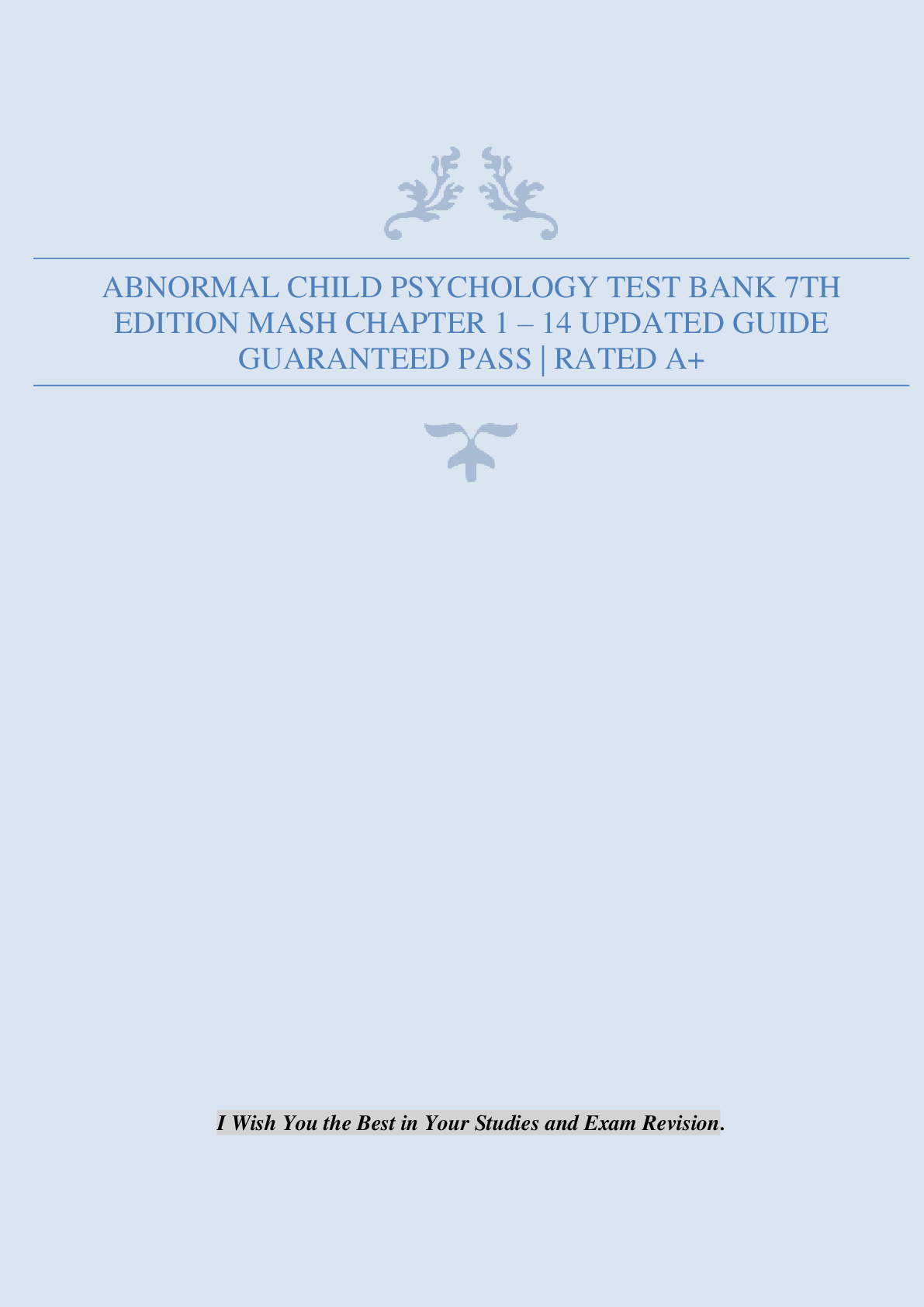
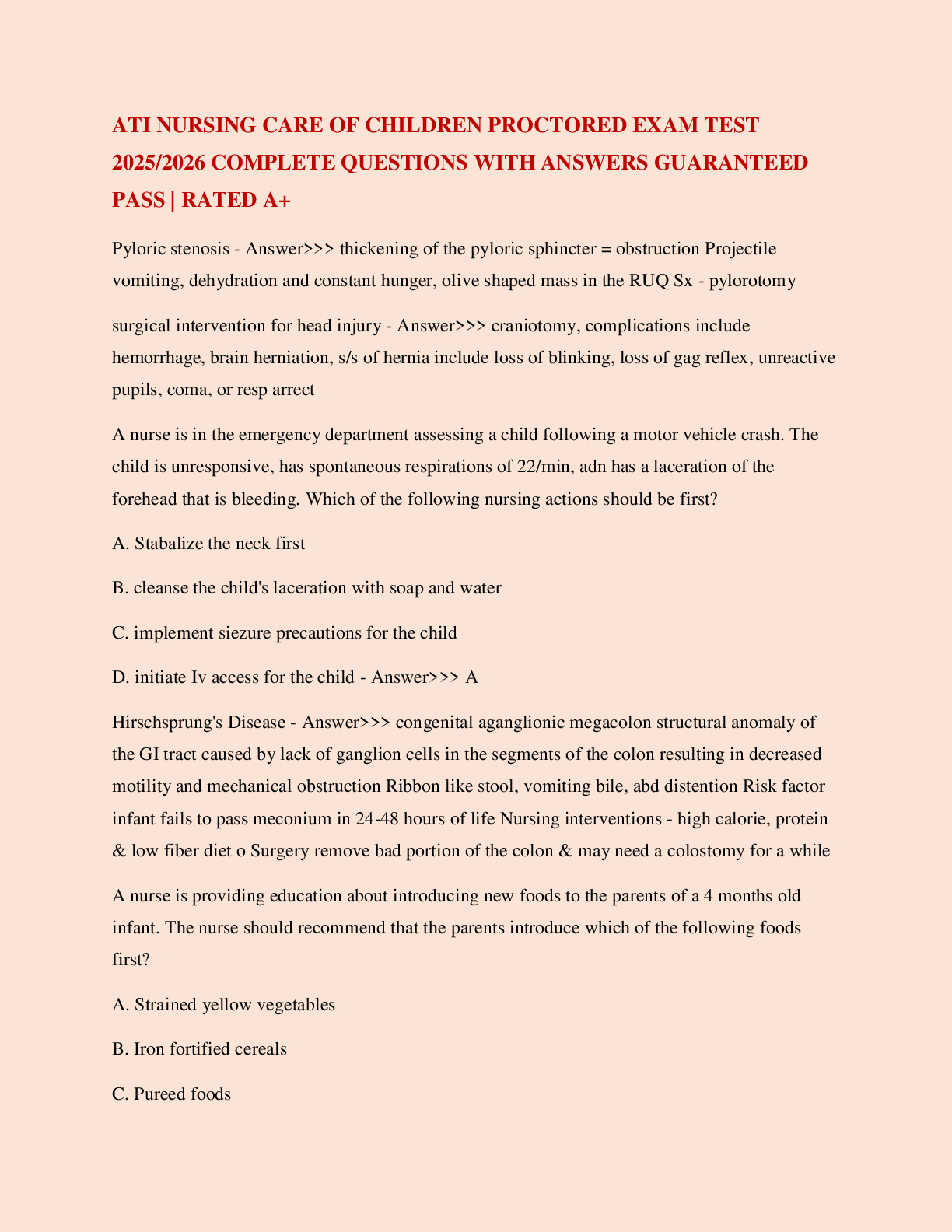

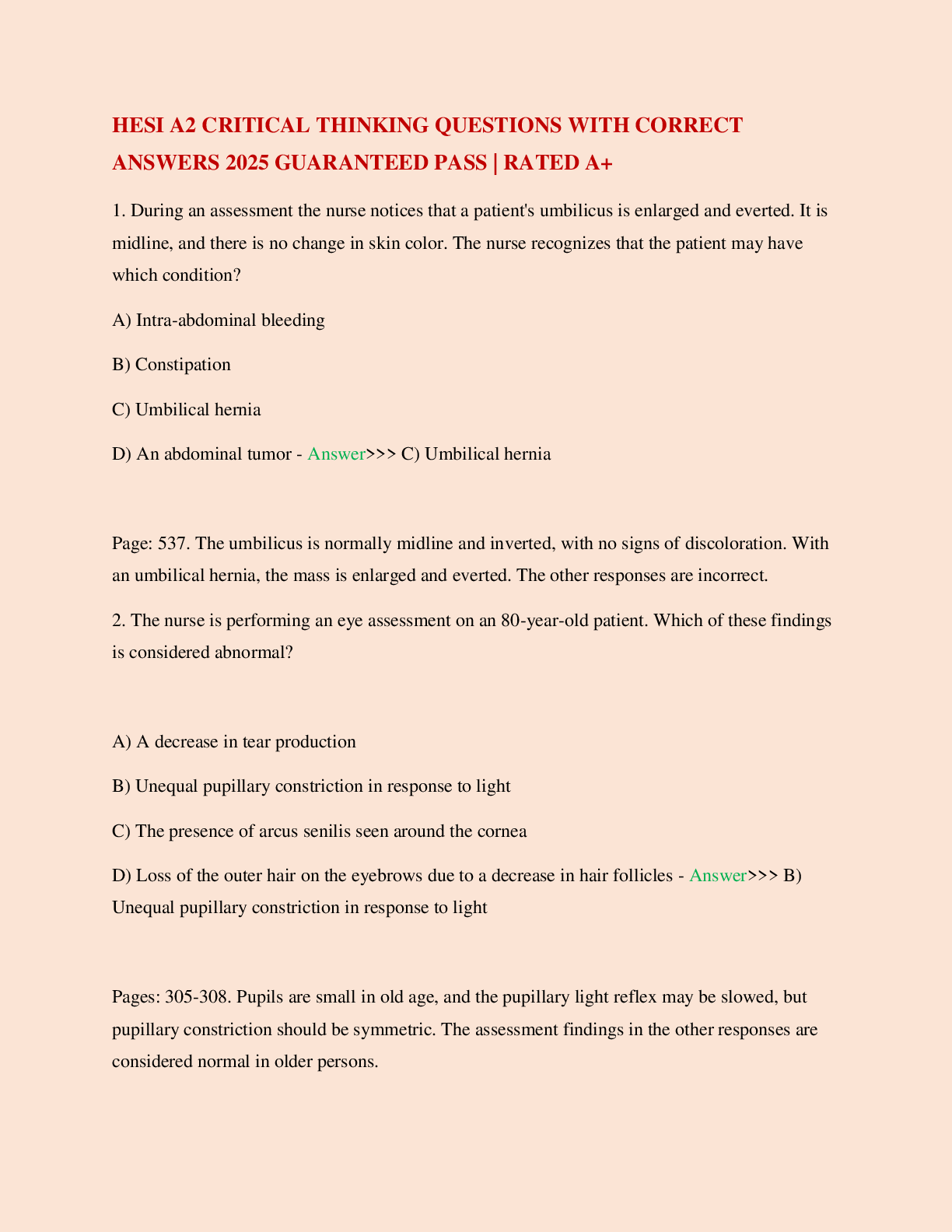
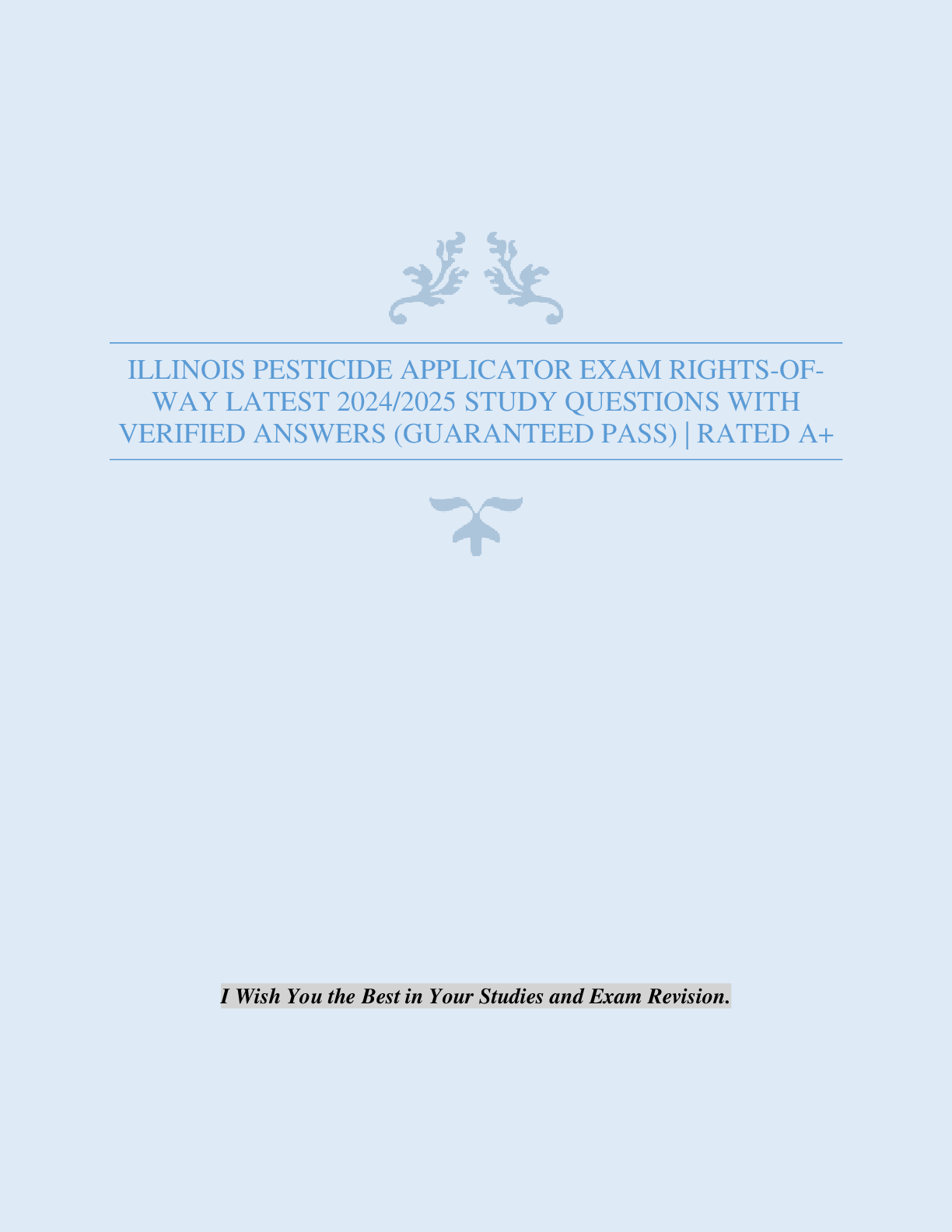

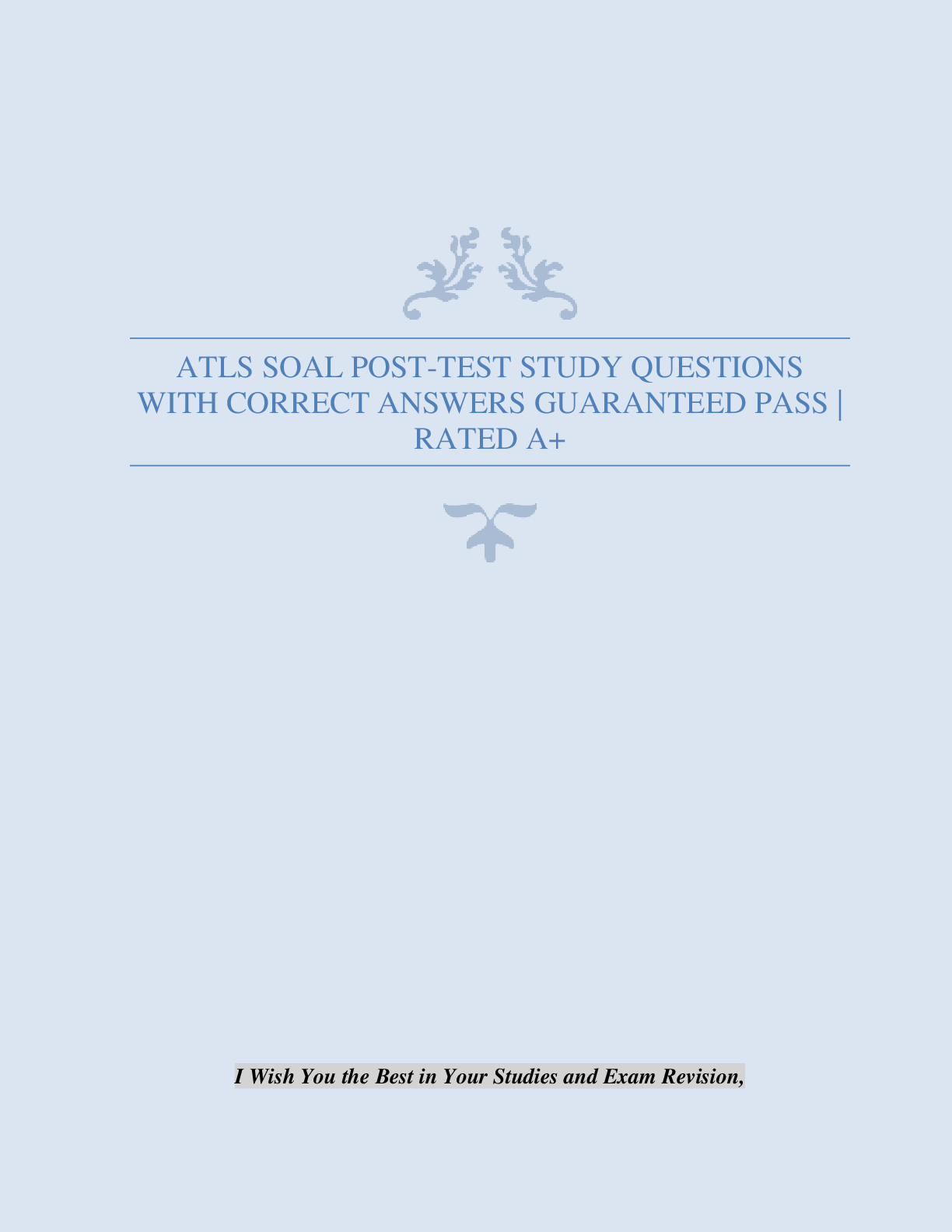
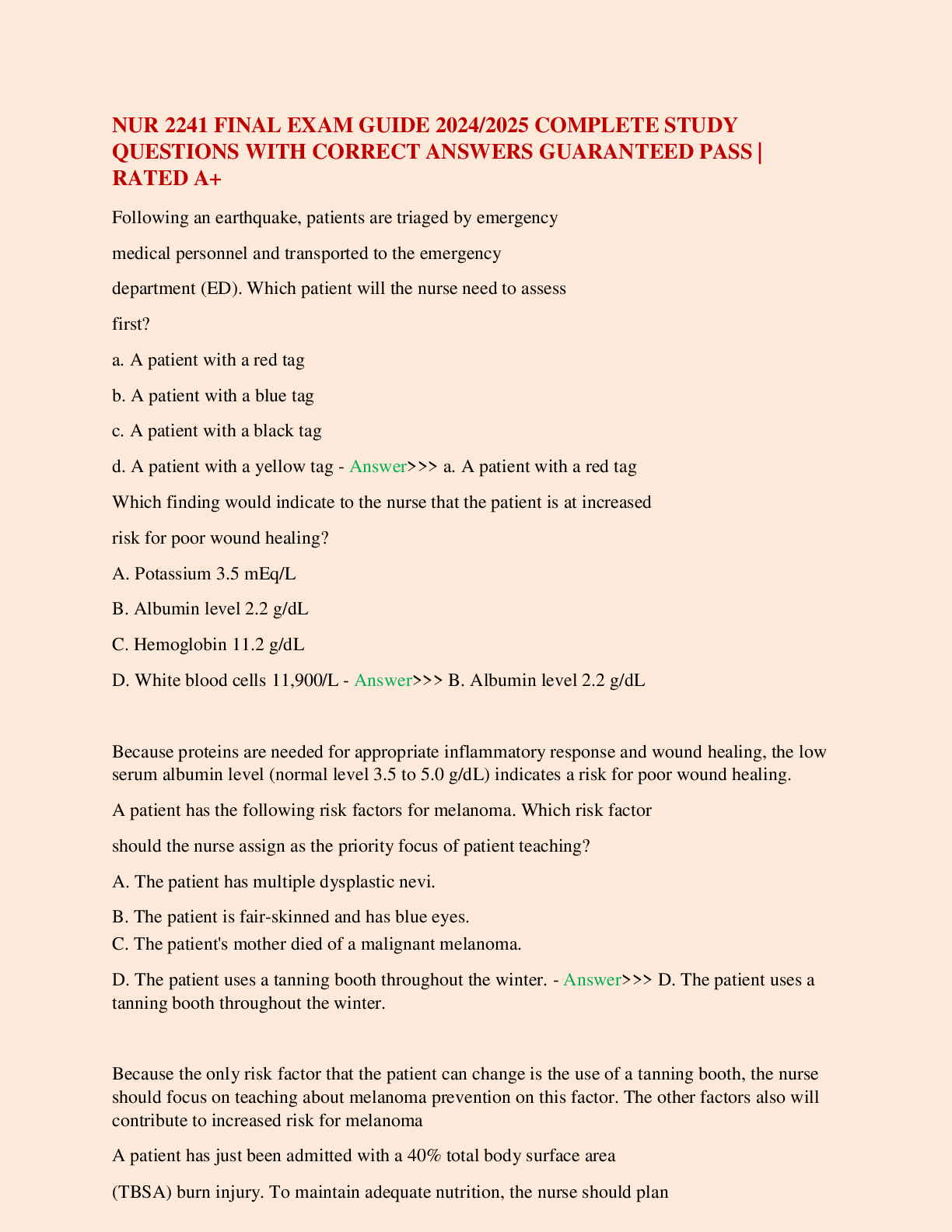
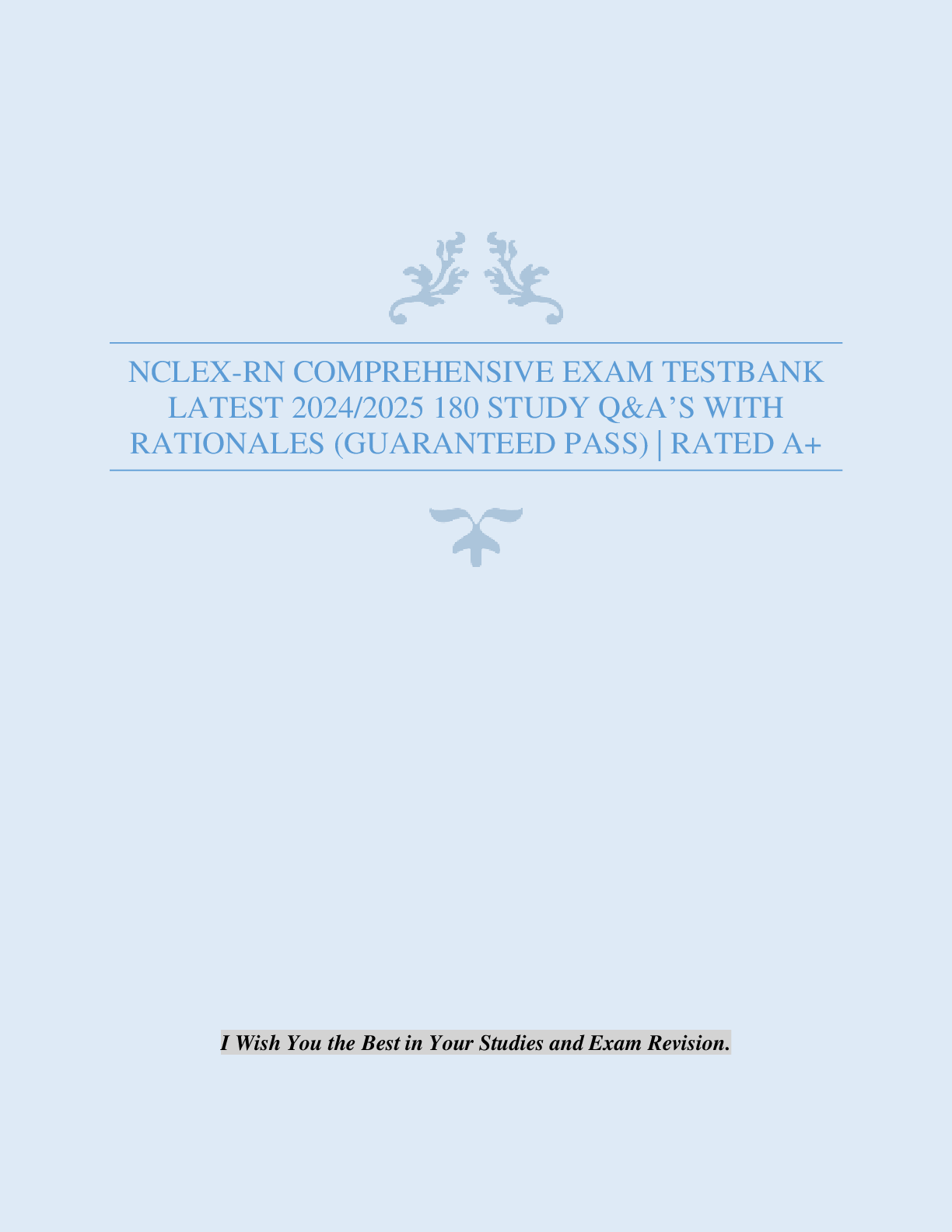
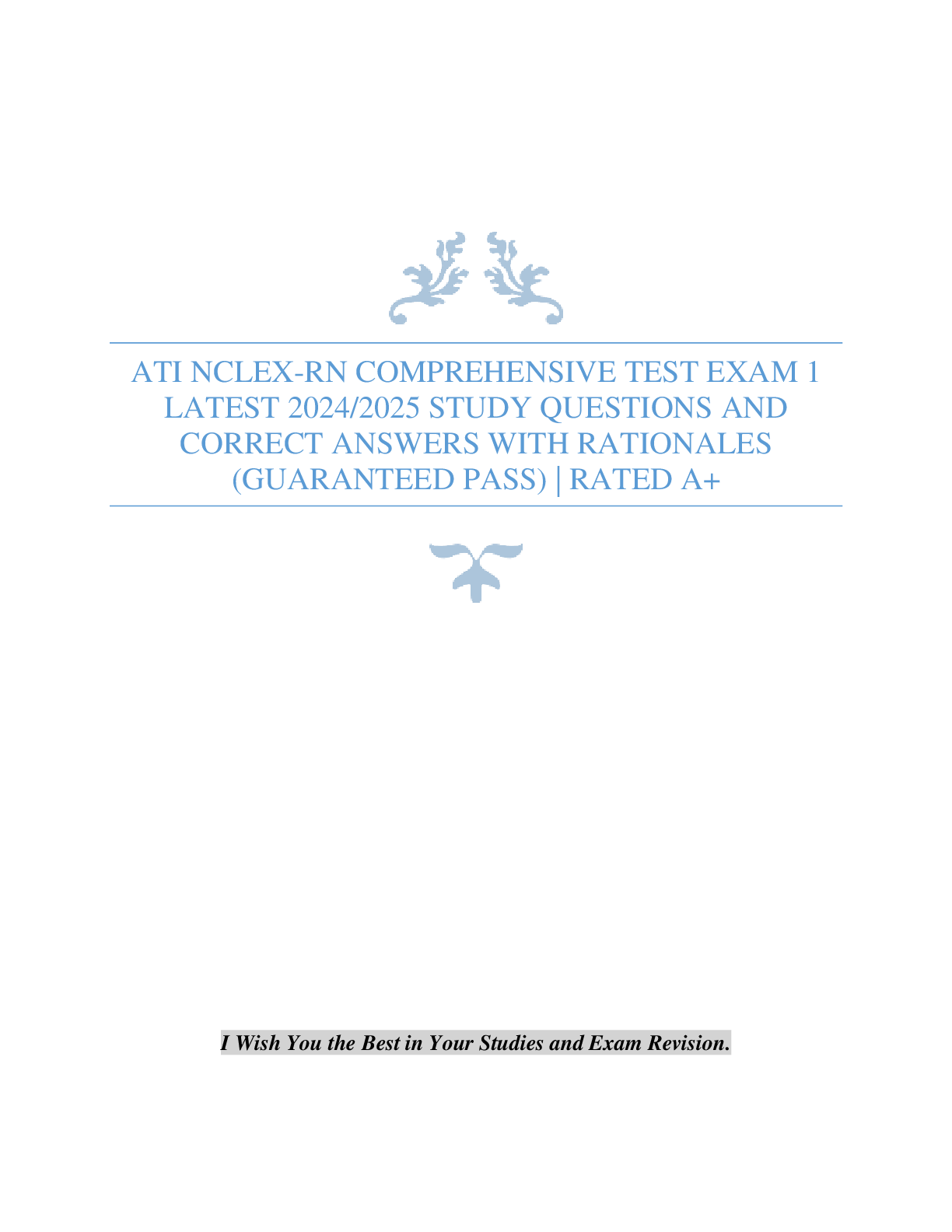






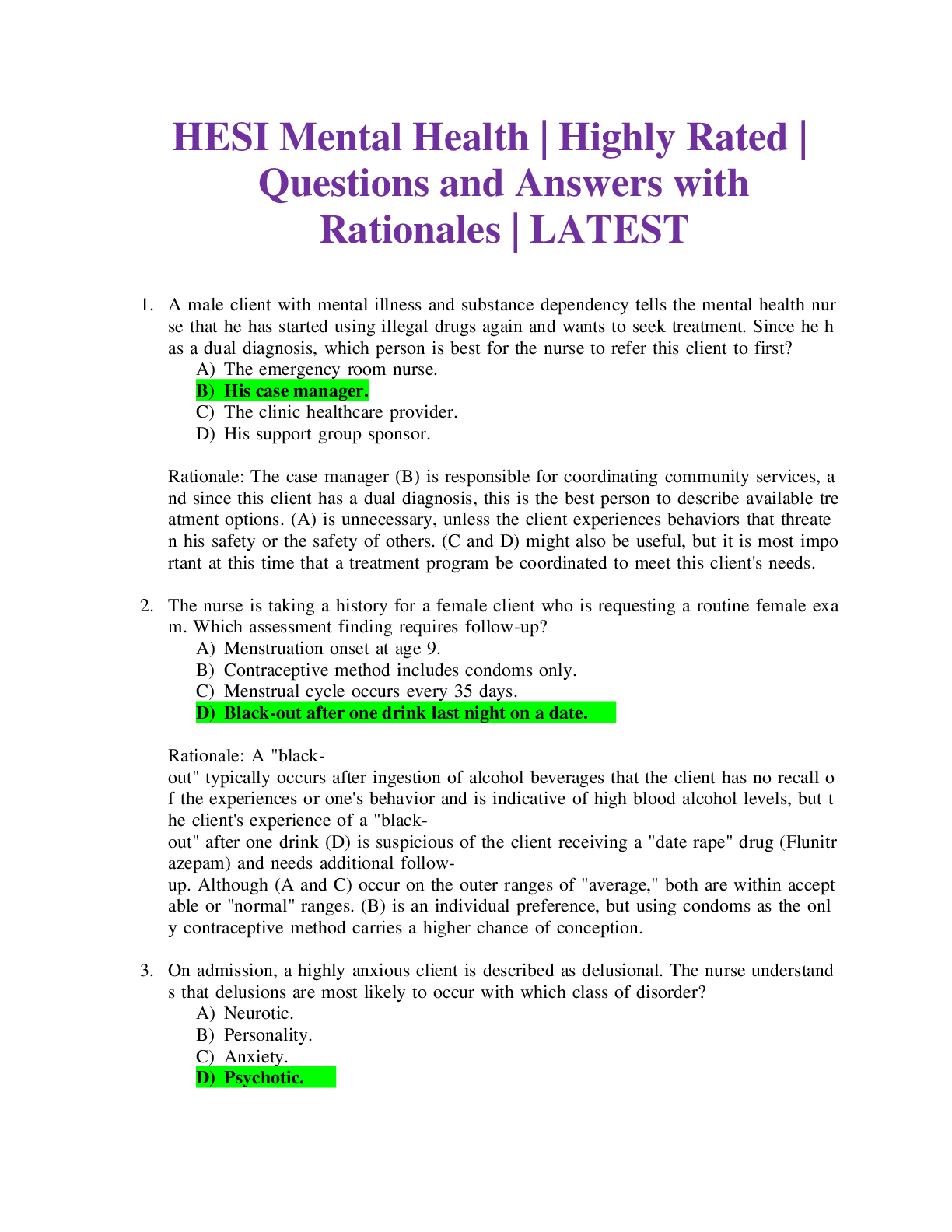

 (1).png)
 (1).png)
 (1).png)
